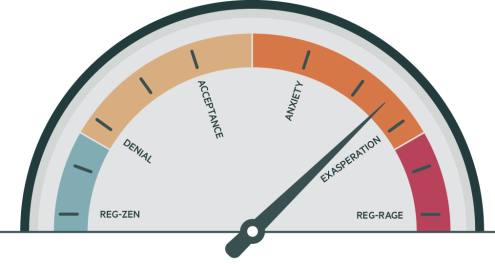Banks are among the best of organisations at marketing their products and services to customers, but some fundamental changes in the marketplace have forced them to reset their priorities.
The financial crisis and the resulting economic fallout have been the obvious big drivers for change in customer marketing and communications. Technological and cultural changes - epitomised by smart phones, iPads, social networking and better financial awareness - have also forced banks to look again at their offerings and reassess their strategic marketing efforts.
So what are the top priorities for financial-services marketing executives today? Four in particular stand out: rebuilding customer trust; harnessing the power of social media; handling customer complaints; and effective customer data management.
Rebuilding customer trust
Financial services are underpinned by trust. So when that trust is damaged, as it has been in the past three years, quick and effective action is needed. Tough new regulations from governments and regulators can restore confidence in the financial system, but the main effort has to come from the financial institutions themselves.
Naveed Sultan, head of global transaction services (GTS) for Europe, the Middle East and Africa at Citi, says there is "no question" that the crisis has adversely affected the public's trust in the financial sector. "In the US, for example, the latest Chicago Booth/Kellogg School Financial Trust Index showed that only 23% of Americans trust the nation's financial system," he says.
The Issues
- Rebuilding customer trust
- Social media
- Complaints handling
- Customer data management
"Whether or not that loss is justified is less relevant than the industry's effort to rebuild its relationship with all stakeholders, in particular regulators, shareholders, employees and, of course, clients."
There must be a serious commitment to change, one that goes beyond slogans and PR efforts. "At Citi, we are working to restore trust through our commitment to responsible finance," says Mr Sultan. "It is the unifying principle around which our chief executive officer, Vikram Pandit, has reorganised the bank in the wake of the crisis.
"Within GTS, we are creating a framework for regaining and maintaining trust that operates at three levels: the individual, the philosophical and the functional. At the individual level, employees act with personal and professional integrity and are motivated by personal responsibility and accountability. We also operate under a philosophy that puts clients first and insists on strong ethical practices. And functionally, our organisational structure aims to prevent reckless actions and guarantee stability. We do this not just by complying with regulations and following industry best practices, but by holding ourselves to the highest ethical standards."
Social media
Many banks already incorporate social media into their marketing strategies, but how effective can this be, especially as there are so many risks to negotiate?
There are two ways in which financial institutions use social media: by advertising on third-party sites - such as Facebook, Twitter or Myspace - and by setting up their own sites. The first option is the easier and less risky, but is by no means innovative as it just piggy-backs off other organisations. The second option is more revolutionary, but fraught with regulatory, reputational and other risks. Many banks have dipped their toes in the water, but only as a broad marketing and awareness exercise, not to sell specific products or services. HSBC's Business Network, for example, helps small businesses share advice and obtain information, but there is no product marketing other than a link to the institution's business banking website.
Similarly, Barclays' 100voices.co.uk for students is full of tips on managing money but does not push student accounts or other services. In fact, a forum member who asked "Which student bank account is the best?" got five replies from other members, four recommending NatWest - mainly because of its student railcard and £1000 ($1600) interest-free overdraft - one recommending Co-op Bank and none mentioning Barclays.
Social media, along with other strategic marketing issues, was discussed at a customer marketing conference recently, as well as at a separate behind-closed-doors round table discussion, both of which were held in London by The Banker in partnership with business analytics company SAS.
Giles Andrews, co-founder and chief executive of Zopa, an online person-to-person lending service that cuts out banks, and a speaker at the conference, summed up his approach to social media. "We don't use it for marketing as in customer acquisition, but for conversation and customer service," he said.
"Plus, allowing customer-service conversations to take place transparently in public - for example, on Twitter - so that others can see any dirty linen, is a powerful trust- and therefore brand-builder."
Anthony Thomson, chairman of Metrobank, which opened its first branch in July this year and is the UK's first new full-service high-street bank in more than 100 years, also spoke at the conference. He said: "The biggest marketing issue for us is engaging with social media. Our launch has been predicated almost entirely on PR activity in the mainstream press and online, and social media is part of that."
About 90% of Metrobank's customers now come from referrals from other customers, either person-to-person or online, including through Twitter and Facebook. Despite the important role that digital marketing plays, "the cornerstone of our customer relationships is the current account and they have to come into one of our stores to open one", said Mr Thomson. "After that, they can transact with us any way they wish."
Many financial institutions are currently wary of social media. "We do nothing in this area at the moment," said Claire Evans, marketing director for Legal & General Investments, which manages more than £331bn of assets. "We are interested, but we need to find an approach that fits with our compliance regime."
Giles Andrews, co-founder and chief executive of Zopa
Complaints handling
Banks have become better at handling complaints from customers, but still the gripes keep coming. In the first half of this year, the UK's Financial Ombudsman Service (FOS) dealt with 84,212 complaints about financial businesses, including banks, insurance companies and investment firms, a small increase on the number received in the first half of 2009.
The UK Financial Services Authority (FSA) has also started to publish complaints statistics and believes that firms could handle complaints better. It published a consultation paper in September proposing changes to its complaint-handling rules "as part of a package of measures to drive up standards of complaint-handling within the industry". The FSA and FOS are also about to introduce new rules on how banks should handle complaints on payment protection insurance (PPI).
In response, the British Bankers' Association says the additional complaints data from the FSA amounts to "data overload". The BBA has also asked the UK High Court for a judicial review of the new PPI rules.
Graham Flower, former head of customer management at HSBC and now an independent consultant, said complaints can be seen as an opportunity. "They are a fantastic source of insight into product design and failures," he said. "Banks are getting better at recognising issues and reporting them up the line for action."
Customer data management
Accurate and timely data provides the foundation for all customer marketing campaigns. Jean Reddan, head of marketing for international retail banking at Lloyds Banking Group, believes that customer data quality has been elevated from being primarily a marketing issue to a top-level business issue. "Everything from data protection and regulatory requirements through to financial reporting is affected by ensuring that our data is accurate," she said.
"This is highlighted even more when working in international jurisdictions. With the fallout from the banking crisis, the world has changed, with customer data underpinning a wide range of corporate functions right up to board level. Only when the basics are right from a customer data perspective can we consider other issues such as extracting improved best value from marketing and customer-service initiatives."
Duncan Ash, financial services marketing manager for SAS, said it is important for banks to consider whether they have a product-centric or customer-centric view of the world, the latter being the better approach. "All too often, companies store their data in silos around products, and don't consider the wider impact of this," he said. "In a customer-centric company, the customer comes first, and marketing teams who share that customer view centrally benefit in a big way, as they can gain access to all sorts of additional insights about that customer."
As the bank builds up a better profile of each customer over time, that information can be used constructively to make sure that clients are targeted with the appropriate products, services and special offers. Analytics can deliver some powerful insights into customer behaviour, but that process must start with collecting the appropriate data.
Sponsored by:









